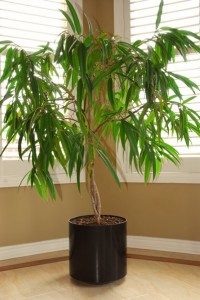Peonies are known for their large bloom and are garden plants. The flowers grow in a variety of colors, with large, showy flowers, which are highly used in weddings plus home decorations too.
Peony flowers are not only for outdoor gardens but as well for indoors too. While peonies are notorious for growing indoors, it is possible to grow so, and you can enjoy their lovely flowers nearly year-round.
As Peonies are generally grown outdoors but can be kept in good container plants in indoors. Peonies are best planted as tubers or small plants in the autumn so that they become established during the winter months.
If necessary, they can also plant in the spring season. While purchasing peons, consider that some become so large that they require support. Moreover, tree peonies have a small root, so this makes it easy to grow in containers indoors.
Can I Grow Peonies from the Seed?


This is fun to grow
peonies from the seeds in a pot as it gives beautiful fragrant flowers. The factors
responsible for the growth of the peon plant are-
1. Take only hybrid seeds
Choose only hybrid seeds
of the Peony plant that can provide colour variations. Before sowing the hybrid
seeds in a pot or container, store them in a fridge to cool down and wash the
pot with warm water to exclude bacteria, dust, plus insects. Later a week,
remove the seeds and sow them in a container or pot.
2. Soil and temperature
Use only well-fertile
soil in a pot and if the soil is heavy or sandy, then improve it with organic
materials such as compost. Keep the soil ph neutral or acidic i.e. 6.5-7. It
can’t produce flowers if the temperature is too hot. Maintain an optimum
temperature of 65–70F for peonies to grow.
3. Water and sunlight
Water the peony plants
quickly after planting it in the soil around the roots. This plant does not
require much water during the spring season, and you can water the peonies once
in two weeks. If you put it in a shaded area then, the flowers will not bloom
well. Therefore, make sure that the peonies get sufficient sunlight. Peony
seeds germinate in around 10–12 weeks.
4. Fertilizer
If you want the best
results then, feed peonies in the spring. Use even organic fertilizers rich in
potassium, nitrogen and bone meal to your plants. When peonies reach at a
height of 10–15 cm, you can feed peons in a ratio of 10–10–10 granular manure.
Avoid using of nitrogen-rich lawn fertilizers can damage the flower.
Steps to Grow Peonies Indoors
Step-1
Firstly drill a half-inch
diameter hole in the bottom of the container to convert a large container into
a planter with drainage. Select a large container like as a semi whiskey barrel
to give enough room for peony roots to spread out without becoming root-bound.
Cover the drainage hole with a piece of cloth to prevent soil and gravel
through the drainage hole.
Step-2
Place the planter inside
a water-holding basin so that excess water can collect as it leaves the
drainage hole, but lift the container to three or four evenly spaced bricks so
that the planter does’not rest in drained soil. Choose an indoor place near the
south-facing window that gets full sunlight a minimum of six hours of daily
sunlight.
Step-3
Spread two inches of
gravel to the bottom of the platter. Fill the planter with a well-drained
potting organic material, leaving about two inches at the top end of the
planter. You can also make your soil by lessening the mixture using equal parts
sphagnum peat moss, prepared compost and coarse sand. Sand or perlite drainage
materials are particularly valuable as they allow excess water to drain away
from the roots and also further restrict root rot.
Step-4
Place peonies in a large
planter so it will help the tip of the root ball rests evenly with around the
soil in the rest of the container. Then, spread one inch of shred bark or you
can use alike organic mulch on top of the soil to maintain soil moisture. Do
not push mulch straight against peonies stems.
Step-5
Add water approximately
once weekly or as required to maintain moderate moisture in the soil. The soil
should never be wet. Instead of regular watering, use water-soluble, low
nitrogen fertilizer 5-10-10 monthly. Dissolve one tbsp of water-soluble
fertilizer in one gallon of water.
Step-6
When the flower begins to
expire, cut the stems just below the flower’s head. With the help of this, you
don’t mess with the petals on the floor. Keep the planter in an unheated place
or other room for the winter. Peonies die back in a severe freeze, but they
require a modestly cool period to best bloom the following growing season.
Step-7
Split the peonies every few years when the plant gets overcrowded in its large container. In the fall cut the foliage at the level of the soil, dig up the whole root ball, plus cut the tuber clump into four squares. Return one division to the initial planter and either cut the remaining divisions or you can plant them in new containers is as per your choice.


Pest and diseases
1. Pests
Peonies can attract
insects with their foliage. Ants are mostly seen on peonies because they mostly
attracted towards the blossoms. Ants do not harm nor benefit peonies as a
comparison to other damaging insects that harm peonies plant. You can spray
pesticides on insects and protect them from spoilage.
2. Disease
Bacterial plus fungal
diseases caused by the reduction of nutrients supplied to the plants. It can
also because of drainage and air circulation. To reduce plant diseases, give
them sufficient nutrients to thrive.
Harvesting
When the flower buds reach an accurate size, they are ready for harvesting. Cut peonies flower at a length of 45–60 cm with the help of a sharp knife or scissors. Moreover, harvesting time depends on peonies plant diversity.




Khaja Moinuddin, a computer science graduate, finds joy in gardening and homesteading. Join him on this blog as he shares his experiences in homesteading, gardening, and composting


